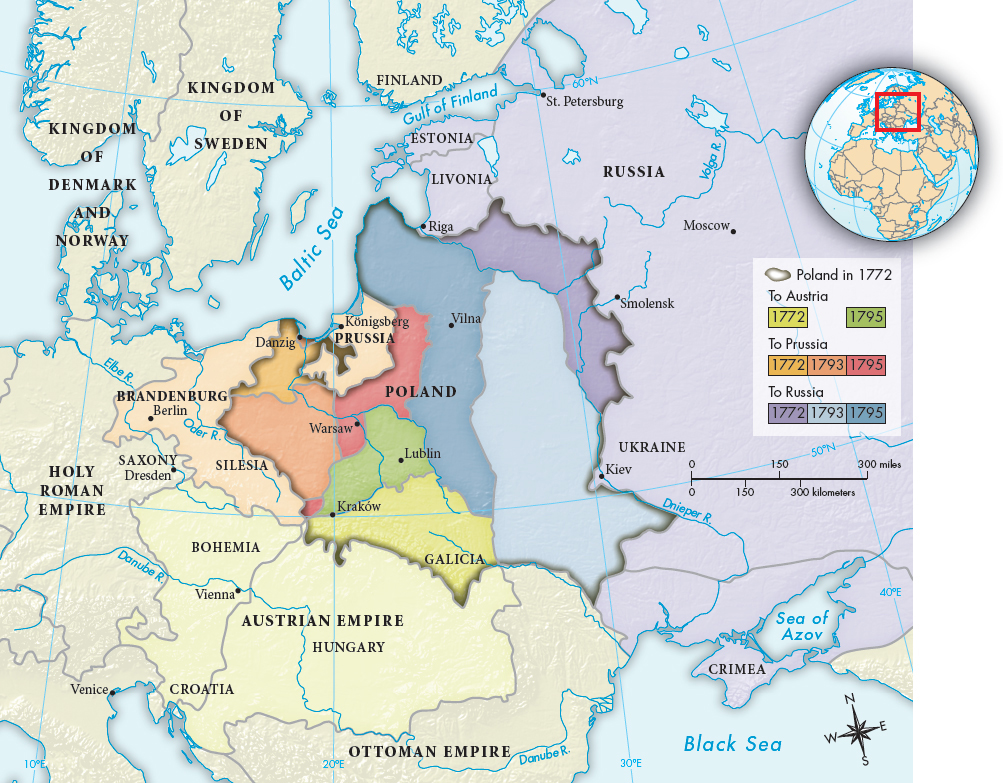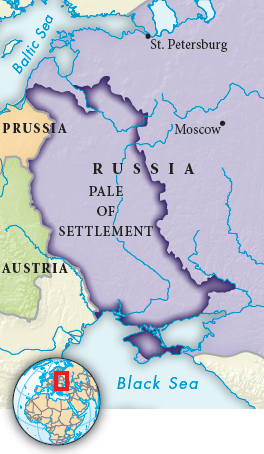Understanding World Societies:
Printed Page 568
Enlightened Absolutism and Its Limits
Some absolutist rulers tried to reform their governments in accordance with Enlightenment ideals. The result was what historians have called the enlightened absolutism of the later eighteenth century. (Similar programs of reform in France and Spain will be discussed in Chapter 22.) Influenced by the philosophes, Frederick II (r. 1740–
Frederick’s reputation as an enlightened prince was rivaled by that of Catherine the Great of Russia. Catherine pursued three major goals. First, she worked hard to continue Peter the Great’s efforts to bring the culture of western Europe to Russia (see “Peter the Great and Russia’s Turn to the West” in Chapter 18). Catherine’s second goal was domestic reform. Like Frederick, she restricted the practice of torture, allowed limited religious tolerance, and tried to improve education and local government. The philosophes applauded these measures and hoped more would follow.
These hopes were dashed by a massive uprising of serfs in 1733 under the leadership of a Cossack soldier named Emelian Pugachev. Although Pugachev was ultimately captured and executed, his rebellion shocked Russian rulers. After 1775 Catherine gave nobles absolute control of their serfs and extended serfdom into new areas. In 1785 she formally freed nobles from taxes and state service. Under Catherine the Russian nobility thus attained its most exalted position, and serfdom entered its most oppressive phase.
Catherine’s third goal was territorial expansion. Her armies subjugated the last descendants of the Mongols and the Crimean Tartars and began the conquest of the Caucasus on the border between Europe and Asia. Her greatest coup was the partition of Poland, which took place in stages from 1772 to 1795 (Map 19.1).

ANALYZING THE MAP: Of the three powers that divided the kingdom of Poland, which benefited the most? How did the partition affect the geographical boundaries of each state, and what was the significance? What border with the former Poland remained unchanged? Why do you think this was the case?CONNECTIONS: Why was Poland vulnerable to partition in the later half of the eighteenth century? What does it say about European politics at the time that a country could simply cease to exist on the map? Could that happen today?

Joseph II (r. 1780–
Perhaps the best examples of the limitations of enlightened absolutism are the debates surrounding the possible emancipation of the Jews. For the most part, Jews in Europe were confined to tiny, overcrowded ghettos; were excluded by law from most occupations; and could be ordered out of a kingdom at a moment’s notice.
In the eighteenth century an Enlightenment movement known as the Haskalah emerged from within the European Jewish community, led by the Prussian philosopher Moses Mendelssohn (1729–
Arguments for tolerance won some ground, especially under Joseph II of Austria. Most monarchs, however, refused to entertain the idea of emancipation. In 1791 Catherine the Great established the Pale of Settlement, a territory encompassing modern-
>QUICK REVIEW
How did participants in the Enlightenment build on the accomplishments of the Scientific Revolution?